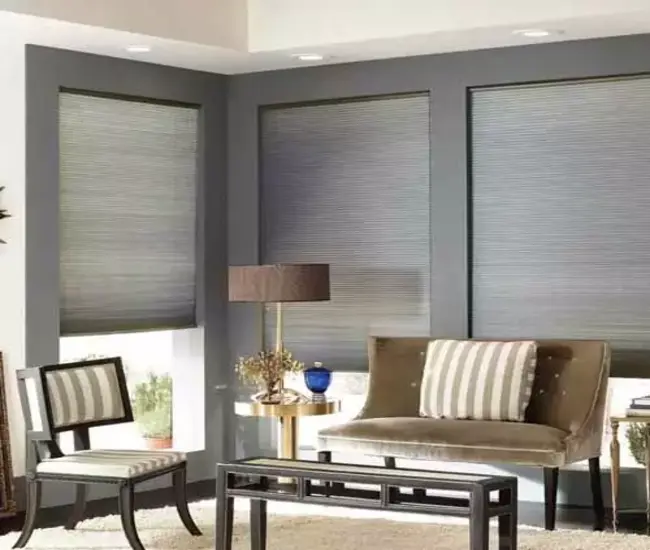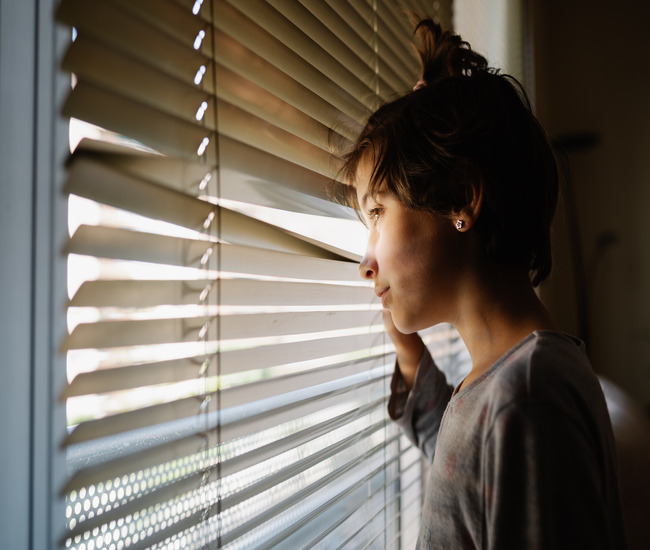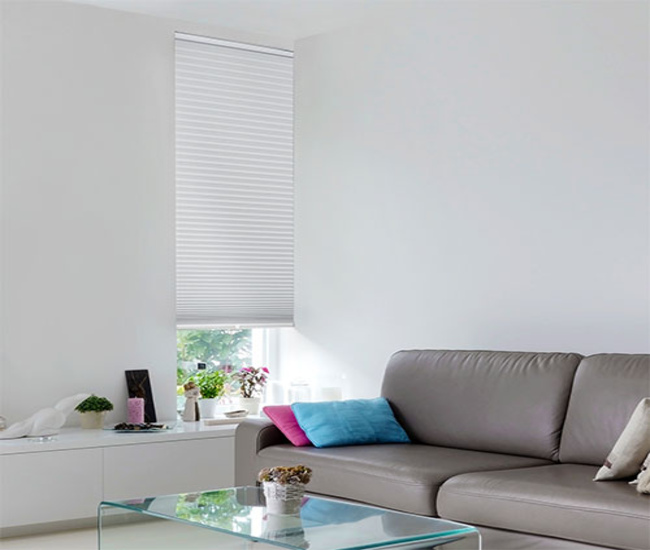How long do cell shades last? You should expect cellular shades (honeycomb blinds) to last between 5 and 10 years, depending on the quality of material used, exposure to the sun, and how well they are maintained. Their lifespan also depends on how often they are operated and how rough you are with them.
Well-constructed, tightly installed, and properly cared-for honeycomb blinds will reduce winter heat loss through windows by 40% or more, and summer heat gain by up to 60%, saving you 10% to 20% on your total energy costs.
Cellular blinds are made of delicate honeycomb structure (which gives them the amazing ability to improve your home’s energy efficiency), so they have a short lifespan. On the other hand, roman shades, which are made of more durable fabrics, last anywhere from 12 to 14 years. Similarly, blinds, made from durable materials like wood or metal can last between 10 and 15 years.
How Cellular Shades Are Unique Window Coverings?

Cellular shades, also called honeycomb shades, have a characteristic cell-like construction that resembles a honeycomb, which gives them better look, energy efficiency, insulation, and noise reduction.
Cellular shades are loved for their unique heat and cold blocking design, noise reduction, light filtering, versatility, and a contemporary style.
Cellular shades first hit the market back in 1985 and quickly became one of the most popular types of window treatments on the market.
This is because up until that point, there had been no other window treatment that was nearly as innovative. Beyond the fact that they look great and control light, they also do wonders at helping to reduce the energy costs of a home due to thermal loss in winter and heat gain in summer.
How Honeycomb Construction Affects Durability and Functionality of Cellular Shades?
The honeycomb design adds to the delicacy, finesses, and energy-saving potential of cellular shades, making them less durable but more energy efficient.
The individual cells in the practical honeycomb shade design do a wonderful job by trapping air, acting as a buffer between the external heat or cold and internal temperature regulated environment. This is what makes them superior to other window treatments like fabric curtains, blinds, sheers (sheer curtains), and the expensive plantation shutters.
Also, honeycomb shades make an attractive choice among the affordable blinds and shades.
Are Top Down Bottom Up Cellular Shades Better for Durability and Temperature Regulation

Many people hesitate when buying top down cellular shades because they aren’t sure if they are durable enough for their home.
Top down bottom up design is not only more durable but also gives you more options to regulate ventilation and temperature of your room. Also, it is a cordless and child-safe option.
Unlike roller shades, the honeycomb shades with top down bottom up feature can ensure effective fresh air ventilation. While hot air can escape from the top open part, cool and fresh air will sail in through the lower open end.
One of the ways to improve the durability of cellular shades is to layer them with other sturdy options. For example, you can use them in combination with heavy-duty blinds such as wooden metallic window coverings.
Major Durability Factor: Cellular Shades Vs. Traditional Blinds
Cellular shades are often much less durable than your traditional fabric blinds, faux wood blinds, aluminum blinds, and wood blinds.
Unlike traditional fabric or wood blinds, cellular shades can become unsightly and bend if they are not taken care of. Pets attacks can also damage or deform honeycomb window coverings.
However, cellular shades made from a mixture of bonded polyester and spun lace, are typically much more durable.
8 Factors Affecting the Durability and Energy Efficiency of Cellular Shades
How long your cellular shades will last and how much energy efficiency they will provide depends on several factors, such as:
1. Quality
The quality of materials used in the construction of cellular shades has a big impact on their longevity and energy efficiency. Shades made from high quality materials are less likely to fray, fade, or experience mechanical damage over time.
2. Construction
Honeycomb blinds with solid, high quality construction are less likely to deteriorate with age. Top grade materials and craftsmanship will ensure more durability and energy saving potential.
3. Double Cellular Design
If your cell shades have a double cellular design or two layers of pleated fabric, they’ll offer more durability and energy efficiency.
4. Exposure to Sun
While most cellular window coverings are designed to withstand direct sunlight, prolonged exposure to extreme sunlight can cause fading over time. It will also affect their ability to block out heat and cold.
5. Exposure to Moisture
If you have installed cellular shade in high-moisture areas like bathrooms, kitchens, and laundry rooms, they will suffer moisture damage, resulting in a shorter lifespan and reduced energy efficiency.
6. Proper Use
Excessive tugging or yanking when raising and lowering cellular blinds will cause damage to the cellular fabric. On the other hand, using them properly and gently will significantly extend their lifespan. So, you’ll keep getting energy efficiency for much longer.
7. Frequency of Use
Cellular shades installed in high traffic areas such as living rooms will require more frequent opening and closing. More frequent or over use will negatively affect their lifespan and insulating potential.
8. Care and Cleaning

The pocketed structure of cellular shades collects more dirt and dust than other blinds. Regular dusting and cleaning will prevent long-term damage from dirt and dust accumulation, adding to their longevity.
Pet- and Child-Safety with Cellular Shades

Luckily, cellular shades are some of the safest types of window treatments out there since they come with a cordless option.
Corded blinds are not safe for small children and pets. However, if you pick out a nice pair of motorized or manual cordless cellular shades, you can help to better protect your little ones.
FAQs
What happens if cellular shades get wet?
If cellular shades get wet frequently, it will cause the pleats to lose their shape and the cells to deform, affecting both their durability and energy efficiency. Similarly, submerging cell shades in water could permanently damage their shade and lead to rust.
What is the life of cellular shades?
You can expect high quality, well-constructed cellular, and properly cared-for cellular shades to last 5 to 10 years. Gentle, less frequent use, and minimal exposure to sun will further add to their lifespan.
Do cellular shades really save energy?
Yes, cellular shades are known for their amazing ability to save energy. They provide higher heating and cooling energy savings than conventional fabric shades and vinyl venetian blinds. With cellular shades installed on the windows, your home’s heating and cooling costs will decrease by 15% to 20% or more!
Which cellular shades are most energy efficient?
Cellular shades with double-cell design and ⅜” compartments are the most energy efficient option. For additional insulation and privacy, we highly recommend ¾” cell shades.
What are the drawbacks of cellular shades?
- Collect dust and get stained over time.
- Require more frequent dusting and vacuuming, incurring higher maintenance costs.
- Difficult to clean, as every cell needs to be cleaned.
- Less durable than fabric, wood, or metal blinds.
Need More Help?
Still unsure about the durability and energy efficiency of cellular shades? Contact our professionals using 24/7 live chat or give us a ring at (800) 863-6109 for expert advice and a custom solution.
